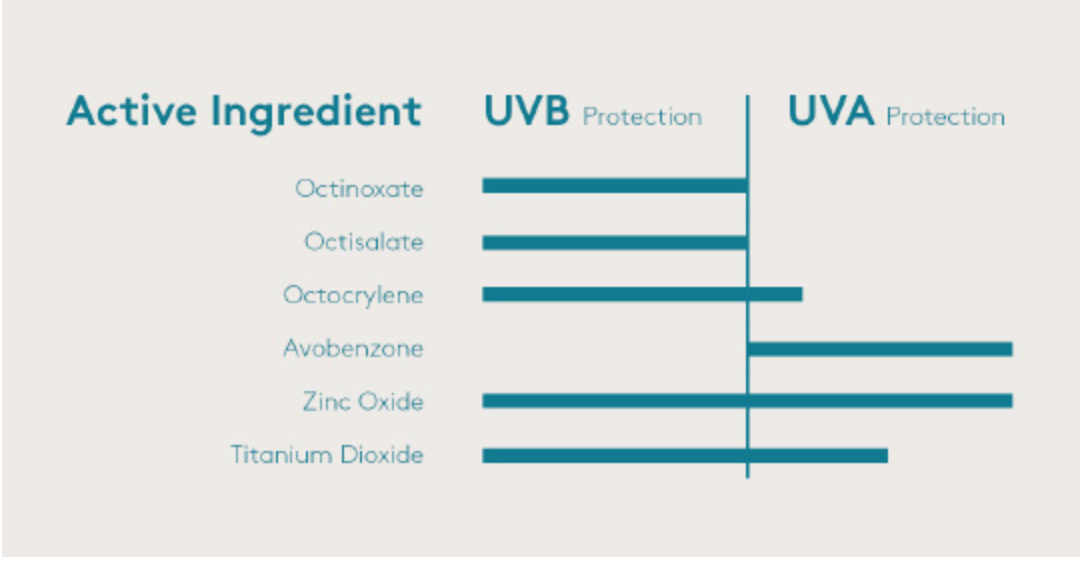|
Selecting the right sunscreen can be confusing. Fear not, we’re here to explain it for you.
First thing’s first: a quick explanation of UVA and UVB rays.
- UV (ultraviolet) rays from the sun come in three different wavelengths: UVA, UVB, and UVC. UVA and UVB rays are the most dangerous.
- UVA rays deeply penetrate the skin, reaching far beyond the dermis—the skin’s thickest layer. This type of UV radiation can cause ageing and wrinkles.
- UVB rays are shorter and burn the surface of your skin, only reaching the most superficial layers. These initially lead to sunburns and, over time, cause skin cancer.
It’s essential that you use a broad-spectrum sunscreen that provides protection against both UVA radiation and UVB radiation to protect your skin from both photoageing and sun damage. Zinc oxide and titanium oxide are the only all-natural ingredients that fit the bill.
|
Chemical vs Physical Sunscreen
While many sunscreens block both UVA and UVB rays, they fall into two separate categories: chemical sunscreen and physical sunscreen (often known as mineral sunscreen). Zinc oxide sunscreens and titanium dioxide sunscreens fall into the latter category.Chemical sunscreen: Chemical sunscreen is exactly what it sounds like—a mixture of chemicals that come together to block UVA and UVB rays. These ingredients are tasked with degrading or deactivating sunlight, creating a chemical reaction that transforms UV rays into heat, which is then released from the skin.Physical sunscreen, on the other hand, is made of natural compounds that sit on the surface of the skin. They absorb and deflect sunlight so that UV radiation does not penetrate the epidermis. As dermatologist Dr. Doris Gray explains, these ingredients act similarly to aluminium foil or a mirror, keeping sunlight from penetrating deeply. This is why at Megan Dempsey the Clinic we only stock physical sunscreens containing zinc oxide and/or titanium dioxide.Countless dermatologists recommend physical sunscreen over chemical. this includes the fact that
- physical sunscreen protects from the sun as soon as it’s applied; chemical sunscreen takes approximately 20 minutes to begin to work.
- Physical sunscreen lasts longer when in direct UV light; chemical sunscreen stops working much more rapidly and must be applied more frequently.
- Physical sunscreen is gentle on the skin and less likely to clog pores, making it better for sensitive skin; chemical sunscreen is much harsher.
Bottom line? No matter your age, what your skin type is, or any particular skin condition you might be dealing with, physical sunscreen is always the best choice – and dermatologists agree.
Credit: https://www.colorescience.com/learn/blog
|
|

